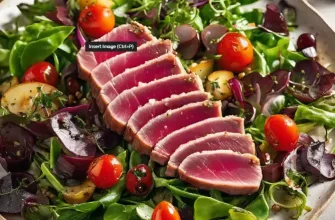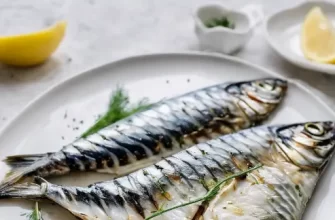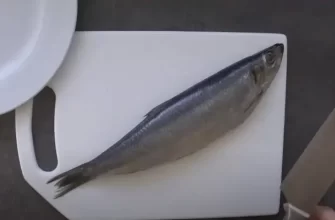Seafood, especially shrimp, is a culinary delight for many individuals. However, consumption of spoiled shrimp can pose significant health risks. We examine the potential implications of eating bad shrimp.
1. Food Poisoning
The most apparent risk is food poisoning, or more specifically, seafood poisoning. If consumed, spoiled shrimp can cause an array of symptoms, such as abdominal pain, nausea, vomiting, diarrhea, and fever. These symptoms might occur within hours of consumption and can range from mild to severe.

Table 1: Symptoms of Seafood Poisoning
| Symptoms | Description |
|---|---|
| Abdominal pain | Uncomfortable sensation in the stomach or abdomen |
| Nausea | A feeling of wanting to throw up |
| Vomiting | Expelling the contents of the stomach through the mouth |
| Diarrhea | An increase in the frequency, volume, or fluidity of the bowel movements |
| Fever | An elevates body temperature typically indicating that the body is fighting off an infection |
2. Shellfish Toxicity
Another danger related to eating spoiled shrimp pertains to shellfish toxicity. Certain types of algae, which shrimp often feed on, produce toxins. When humans eat shrimp that have consumed these toxins, it may result in shellfish poisoning.
3. Allergic Reactions
In addition to these, consuming bad shrimp may trigger allergic reactions in hypersensitive individuals. Symptoms can include shortness of breath, swelling, itchiness, hives, or even anaphylaxis – a severe, potentially life-threatening allergic reaction.
Prevention is Better than Cure
While the effects of consuming bad shrimp can be unsettling, they are certainly preventable. Ensuring the freshness of the shrimp, proper handling, appropriate storage, and thorough cooking are all essential steps to reduce the risk.
Table 2: Preventive measures against Seafood Poisoning
| Preventive measures | Description |
|---|---|
| Checking freshness | Check for signs like bright, clear eyes, firm flesh, and a mild, fresh smell. Avoid those with a strong, fishy odor |
| Proper handling | Keep shrimp cold until you’re ready to cook it. Minimize the time that shrimp is in the ‘temperature danger zone’ (4°C-60°C / 40°F-140°F) |
| Appropriate storage | Refrigerate cooked shrimp within two hours of cooking. Freeze it if you won’t be eating it within two days |
| Thorough cooking | Cook shrimp thoroughly to kill bacteria and parasites. Avoid raw preparations unless you’re certain of the shrimp’s freshness and handling |
In conclusion, while shrimp is a healthy and delicious addition to many diets, it’s important to take precautions when handling and consuming this delicacy. If in doubt of the freshness or quality of your shrimp, it is always better to err on the side of caution and avoid consumption.
FAQ about Shrimp Quality and Safety
How do you know if shrimp is bad?
In order to determine if shrimp has gone bad, look out for a few indicators. When shrimp is fresh, it should have a slightly salted scent that reminds you of the ocean. However, spoiled shrimp tends to give off a sour, ammonia-like, or strong smell. The texture of the shrimp is also a useful clue; if it feels slimy or sticky, it may be rotten. Furthermore, examine the color; shrimp that is discolored or has spots may indicate spoilage.
What does bad shrimp smell like?
Rotten shrimp generally gives off a powerful, displeasing smell that can be characterized as tangy, similar to ammonia, or extremely foul. This fragrance is noticeably distinct from the gentle, sea-like aroma of fresh shrimp and serves as a strong warning that the shrimp should not be eaten.
Is it OK to eat smelly shrimp?
No, consuming shrimp with a strong and unpleasant smell is not advisable as it indicates their spoilage and potential presence of harmful bacteria causing foodborne illnesses. It is recommended to dispose of shrimp that emits an unpleasant odor.
What color is bad shrimp?
Shrimp of poor quality frequently shows color variations, such as the occurrence of dark spots or dull patches that were once more vibrant. Conversely, shrimp of excellent quality should appear transparent, with a shiny coating and a consistent color. Nonetheless, if the shrimp is already cooked, it ought to have a pinkish tone and a solid appearance.
How long after eating bad shrimp will I get sick?
If you consume bad shrimp, symptoms of food poisoning can start as early as 30 minutes after ingestion. However, it can also take up to several days to feel sick. The common symptoms include nausea, vomiting, stomach cramps, diarrhea, and fever. If you experience severe or prolonged symptoms after consuming questionable shrimp, seek medical attention.
Why do I smell after eating shrimp?
Some people may notice a body odor after eating shrimp; this can be due to a substance called trimethylamine (TMA), which is present in seafood. When your body breaks down TMA, the substance may be excreted through pores, breath, and urine, producing an unpleasant fishy smell. However, not everyone has this reaction, and it can depend greatly on individual metabolism.









